|
Here’s a ten-word description of how most people shop for groceries: They throw things in their cart and they check out. What’s the right amount of fruits and vegetables to put in a cart? We don’t really know because we don’t really care. Yet imagine what would happen if every time we put something in our cart we had to ask ourselves whether it was healthy or not. It’d be irritating--for sure--but after a while we’d think twice about what we casually threw in. Just stopping and thinking for a split second would be enough to snap us out of our mindlessly habitual zombie shopping trance.[i],[ii] Back to the cart. When most of us shop, fruits and vegetables take up only 24 percent of our cart.[iii]But suppose your grocery store sectioned a cart in half by taping a piece of yellow duct tape across the middle interior of the cart. And suppose they put a sign in the front of the cart that recommended that you put all the fruits and vegetables in the front and all the other foods in the back. This dividing line in the cart doesn’t moralize or lecture. It just encourages shoppers to ask themselves whether the food in their hand goes in the front or back of the cart. There’s nothing to resist or rage against--they’re simply sorting their food.
We made a few dozen of these divided carts to test at supermarkets in Williamsburg, Virginia, and Toronto, Canada.[v]When people finished shopping and returned their souped-up, tricked-out carts, we gave them a gift card to a local coffee shop if they would answer some questions and give us their shopping receipt. Shoppers with these divided carts spent twice as much on fruits and vegetables. They also spent more at the store--about 25 percent more. Not only did this fruit and vegetable divider make them think twice about what they bought, it also made them believe that buying more fruits and vegetables was normal. Who knows how much healthy stuff your neighbor buys? It must be about half,people think as they throw in some pears and three more red peppers. Also check out this Huffington Post article on what what else you can do to be Slim by Design in supermarkets and restaurants. References
[i] A number of years ago we gave secretaries dishes of chocolate kisses which we either placed on their desk or six feet from their desk. We found that those who had to walk only 6 feet, ate half as much candy (100 calories less; 4 each day instead of 9). Yet when we asked them if it’s because the 6-foot walk was too far or too much of a hassle, their answer surprised us. They said instead that the 6-foot distance gave them a chance to pause and ask themselves if they were really that hungry. Half the time they’d answer “no.” The key was that something – that distance – caused them to pause and interrupt their mindlessness: Brian Wansink, James E. Painter and Yeon-Kyung Lee (2006), “The Office Candy Dish: Proximity’s Influence on Estimated and Actual Candy Consumption,” International Journal of Obesity, 30:5 (May), 871-5. [ii]Anything that stops and makes a person pause – even for a split second – might be enough to knock themselves out of their mindless trance and rethink. [iii]The average grocery shopper buys only 24 percent fruits and vegetables. French, Simone, Melanie Wall, Nathan R. Mitchell, Scott T. Shimotsu, and Ericka Welsh (2009), “Annotated Receipts Capture Household Food Purchases From a Broad Range of Sources,” International Journal of Behavioral Nutrition and Physical Activity, 6, 37. [iv]Brian Wansink, C.R. Payne, K.C. Herbst, D. Soman (2013), “Part Carts: Assortment Allocation Cues that Increase Fruit and Vegetable Purchases,” Journal of Nutrition Education and Behavior, 45:4S, 42. [v]Wansink, Brian, Dilip Soman, and Kenneth C. Herbst. "Larger partitions lead to larger sales: Divided grocery carts alter purchase norms and increase sales." Journal of Business Research 75 (2017): 202-209.
0 Comments
Leave a Reply. |
Our Mission:For 30 years my Food and Brand Lab and I have done research to discover useful, win-win answers to everyday questions related to shopping, dining, and eating healthier at home without sacrificing anything. These answers are also very useful to companies that want to profitably make their customers or employees healthier and happier. Please share whatever you find useful. Useful BooksArchives |
||||||||
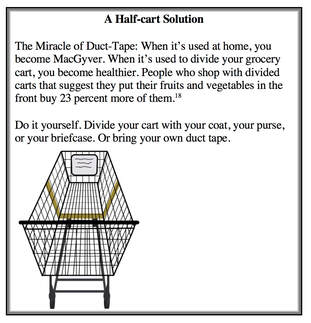
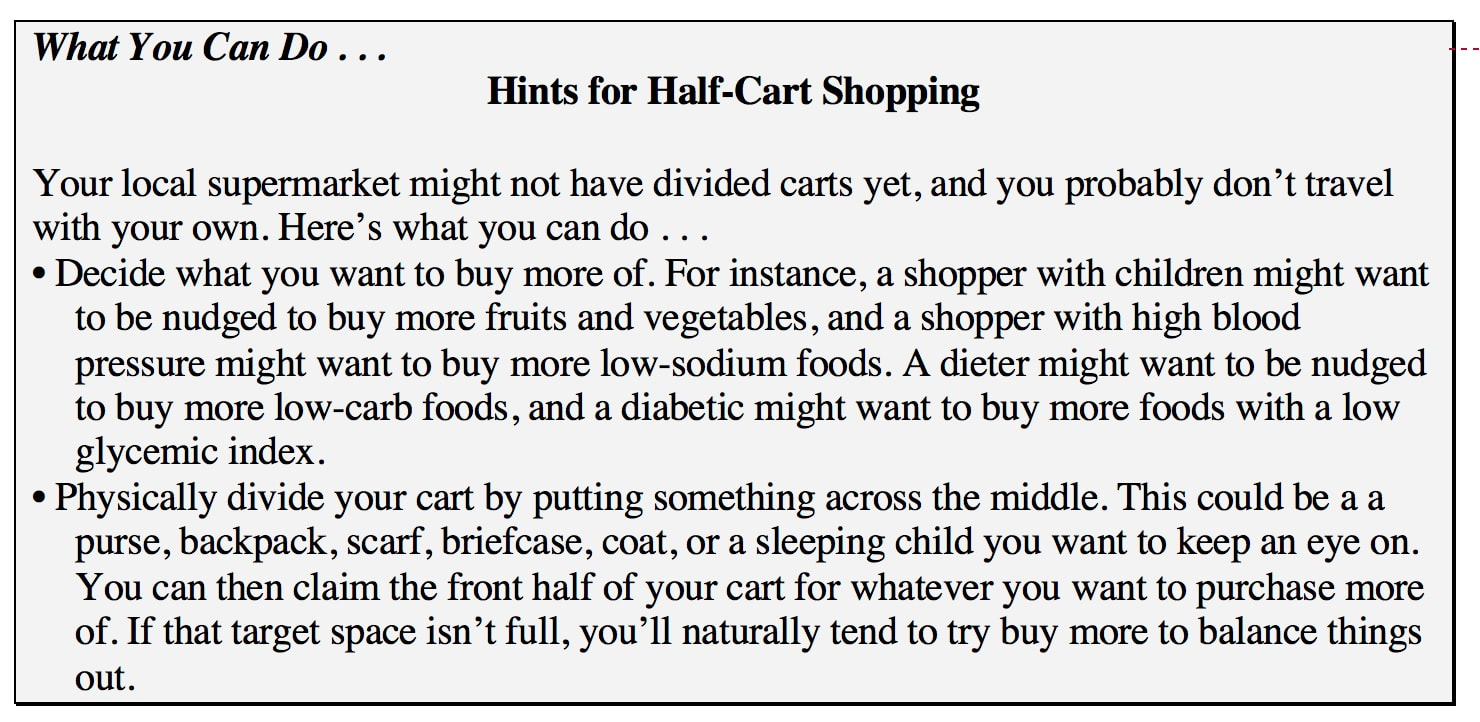
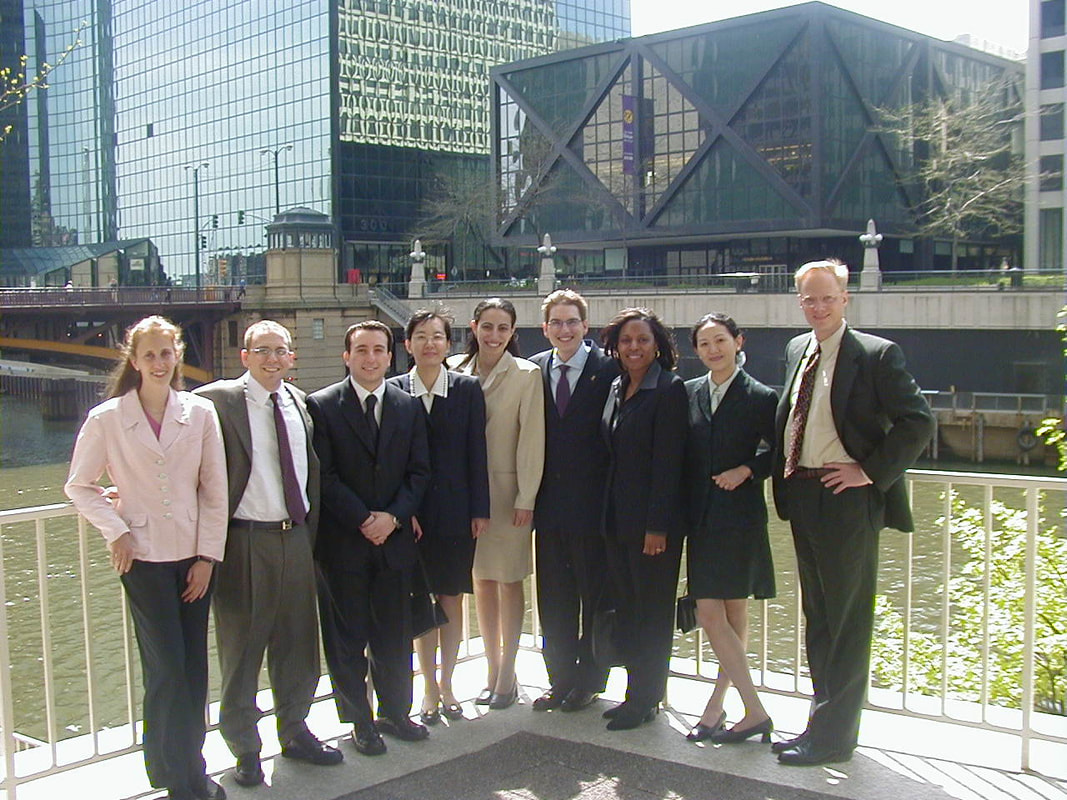

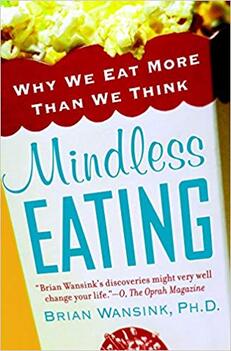
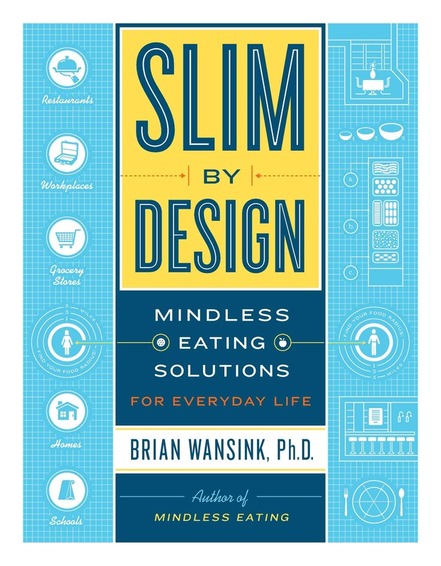
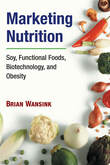
 RSS Feed
RSS Feed